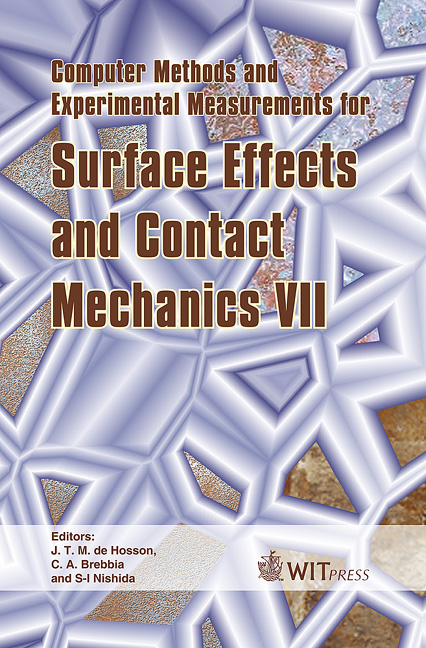Characterization Of Nano-composite PVD Coatings For Wear-resistant Applications
Price
Free (open access)
Transaction
Volume
49
Pages
10
Published
2005
Size
3,010 kb
Paper DOI
10.2495/SECM050201
Copyright
WIT Press
Author(s)
D. Galvan, Y. T. Pei & J. Th. M. De Hosson
Abstract
Various methodologies for the characterization of nano-composite coatings are discussed, which consist TiC nano-particles distributed in an amorphous hydrocarbon (a-C:H) matrix. Complications that arise from the influence of coating roughness and underlying substrate on the properties are evaluated and suitable solutions are proposed. Experimental techniques such as nanoindentation, EPMA, XPS, XRD and (cross-sectional) SEM and TEM are used for a detailed characterization of 1-2 µm thick nano-composite coatings. The nano-structure and columnar morphology of two coatings of different Ti content has been characterized. The deformation and failure behavior of the two coatings is characterized with the combined use of nano-indentations, TEM and FIB techniques. A lower Ti content results in smaller TiC particle size, restrained columnar growth and an improved elastic recovery. Keywords: nano-composite coating; characterization, TEM, XRD, XPS. 1 Introduction Nano-composite coatings based on an amorphous hydrocarbon (a-C:H) matrix are promising material systems for low friction and wear resistant applications. A detailed characterization of its structure permits to understand the deformation behavior and how this depends on the different microstructures that can be achieved. The interest in developing a structure-property relationship for this material system stems from the promising properties in the field of tribological coatings for automotive applications [1]. The characterization of nano-composite materials in the form of 1-2 µm thick films is complicated due to the influence of
Keywords
nano-composite coating; characterization, TEM, XRD, XPS.





